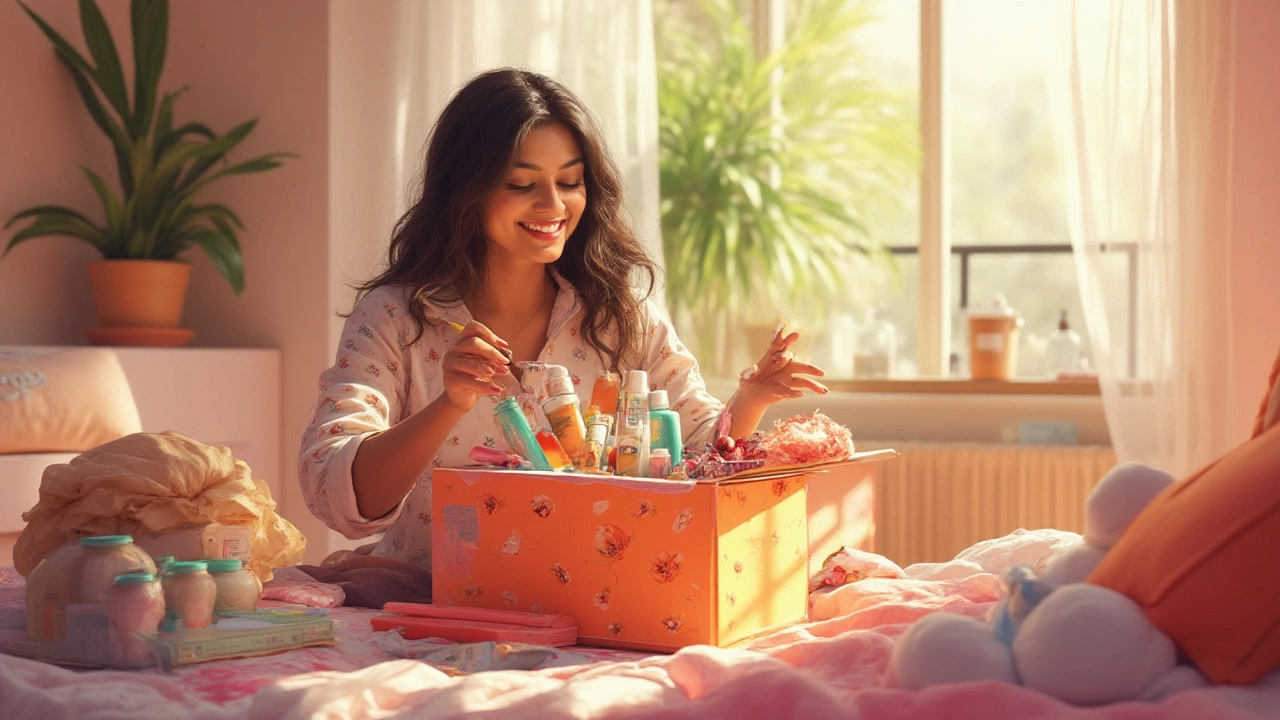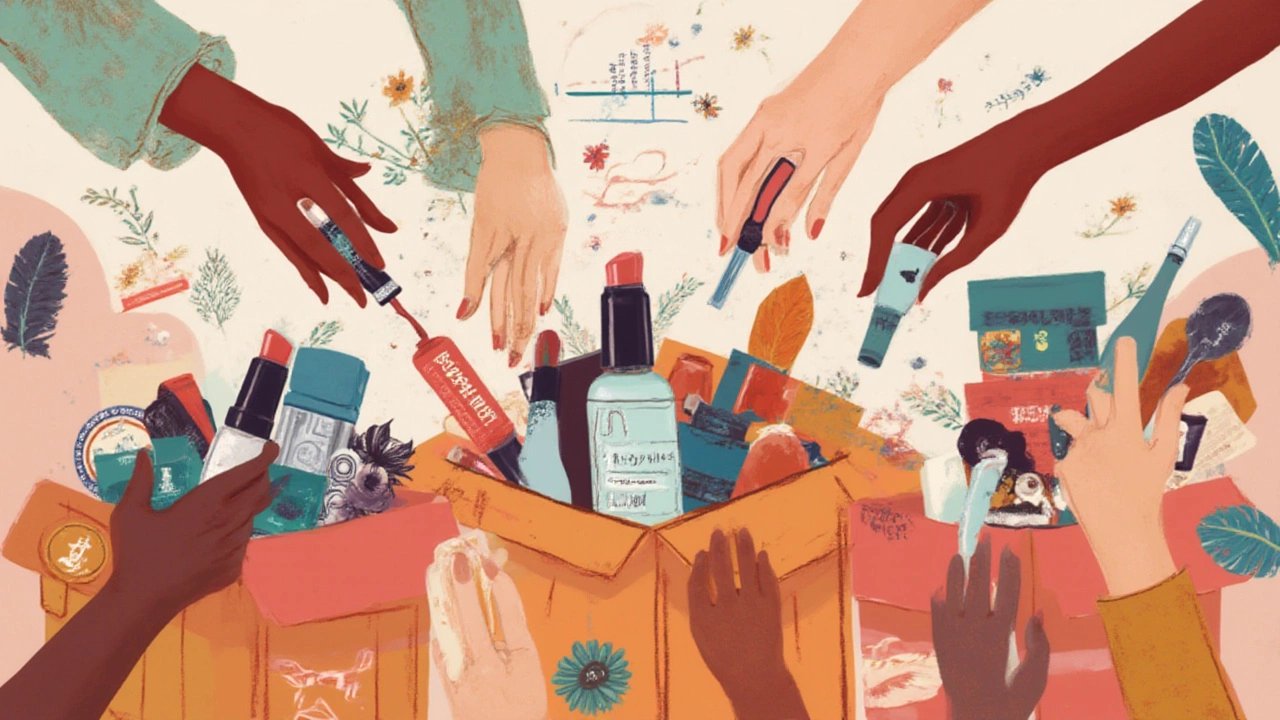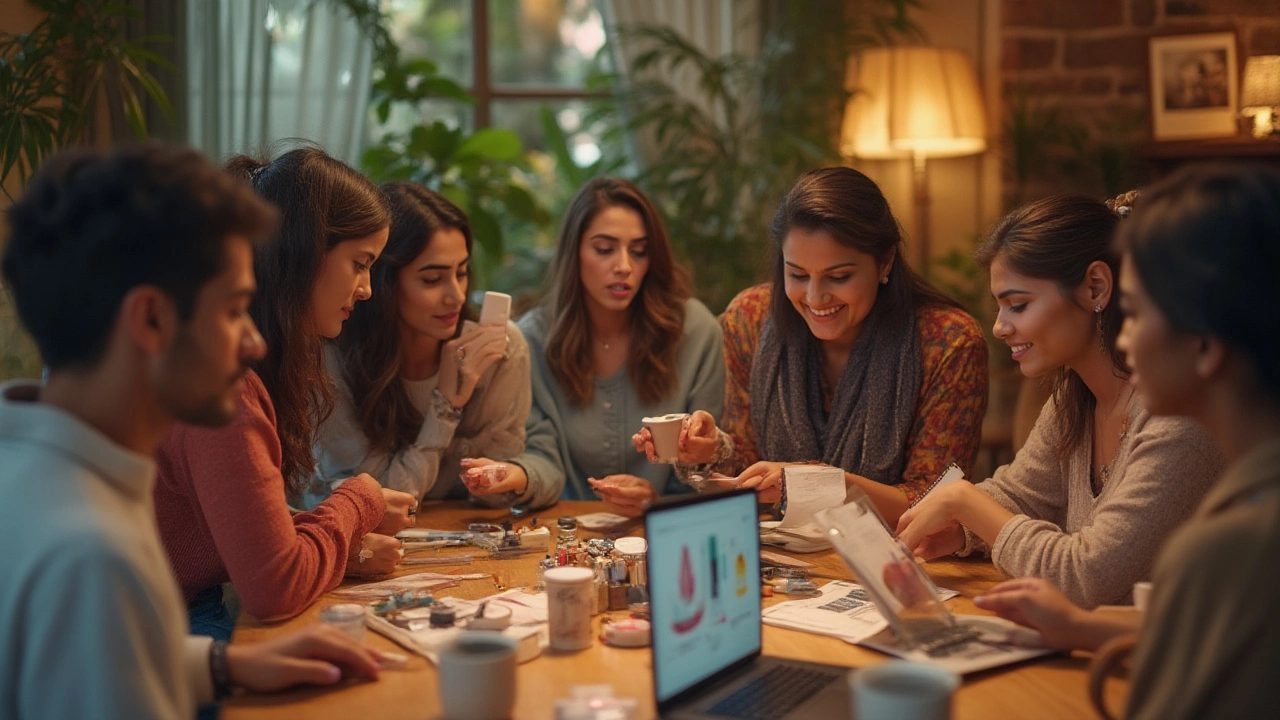
Instagram feeds used to be full of smiling faces clutching freshly opened subscription boxes, with layers of tissue and new beauty finds ready for a close-up. Fast forward to today, and things look a bit different. Some people claim subscription boxes are dying out, but numbers tell a more complicated story. Others swear they’re the best way to try fresh beauty products without leaving the couch. What’s actually happening out there? There’s a ton of noise, but behind the headlines, the real changes are all about how people buy, what they want, and where brands put their energy.
The Evolution of Subscription Boxes: Booming Start, Bumpy Journey
The subscription box scene didn’t start overnight. Back in the early 2010s, beauty boxes like Birchbox and Glossybox made it cool to get a monthly surprise at your door. Suddenly, everyone wanted to try sample-sized mascaras, quirky serums, and indie lotions. The numbers snowballed fast: by 2017, dozens of companies jostled for attention, and nearly 15% of online shoppers in the US reportedly had some kind of subscription box habit.
But a gold rush always slows down. As choices ballooned, so did cancellations. People grew pickier about what showed up in their boxes, tired of repeats and unwanted items. Post-2020, when lockdowns made online shopping explode, the pace didn’t last. By mid-2023, stats showed about 5-8% of beauty subscription box customers in Australia had stopped their subscriptions entirely. This didn’t spell doom for everyone, though—some big names pivoted, while smaller players faded or merged. The market has matured, but it’s not shrinking as fast as it looks at a glance.
Why the shift? It comes down to consumer habits. People want value, but not at the expense of waste or clutter. They crave personalisation—nobody’s keen on another red lipstick if it doesn’t suit them. Subscription fatigue is real, and customers have caught on to the tricks: brands sending full-sized items one month, then mini samples for the rest. But the smarter brands are evolving past gimmicky fillers and into seriously curated, high-quality stuff.
And there’s another twist. Big retail beauty brands like Sephora Australia and local players like Bellabox now combine boxes with online stores, loyalty perks, and custom quizzes. People love this because it feels less like a boring monthly bill and more like a tailored journey. It’s digital, flexible, and you get to pick what actually makes it into your bag. As customers get savvier, brands who don’t move with the times get left behind.
The bottom line? Subscription boxes aren’t dying—they’re mutating. The brands that listen to feedback, offer customisation, and don’t skimp on value have a fighting chance. Those that don’t are fading into the background, quietly unsubscribed forever.
Why Some Subscription Boxes Still Shine
It’s tempting to chalk subscription boxes up as just another fad, but the most successful ones know something most people miss. It’s not about piling in the most products or going wild with unboxing videos anymore. The key is curation, trust, and a sense of discovery—especially when so many shoppers are craving newness but don’t want to waste their cash on full-sized unknowns.
Look at Mecca’s Beauty Loop in Australia. Members get seasonal boxes tailored to their profile—so if you have dry skin, you’re far more likely to get *right* products. People love surprises, but only if they feel personal. Research from McKinsey in 2024 found that 73% of beauty box subscribers said relevance and useful product discovery was their number-one reason to stay signed up.
Then there’s value. Everyone loves a bargain, but people catch on if brands substitute good products with fillers. Sustainable packaging and ethical choices matter too—especially among Gen Z and millennials, who make up over 55% of active beauty-box users here in Sydney, according to a late-2024 industry report. Boxes that use recycled materials and feature clean beauty brands get higher renewal rates and stronger word-of-mouth.
There are also unique categories carving out their space. For example, build-your-own-box options are booming. Instead of getting a mystery bundle, you pick 3-5 products from a rotating list. Or think about wellness-focused boxes that include everything from adaptogen teas to cruelty-free nail polishes—all tailored around a monthly health theme, instead of pure makeup overload. Even niche skincare subscriptions, offering clinical actives and no BS marketing, are drawing crowds from people bored of influencer hype.
Tired of repeats? Some brands now use AI to match your profile with boxes from the moment you sign up, promising zero doubles in your six-month cycle. Want to avoid waste? “Skip a month” and “pause” features are now standard. People want flexibility, relevance, and new discoveries (without committing to dozens of unused cleansers).
If you’re thinking about trying—or quitting—a box, check reviews on platforms like Trustpilot or Reddit’s r/BeautyBoxes. You’ll see real talk about actual delivery times, surprise fees, and if the box really features the brands they promise on socials. Don’t forget: the best boxes are upfront about what’s coming and actually listen when you say “enough with the eyeliners already.”

Why Some Boxes Fail: Subscription Fatigue and Changing Habits
The thrill of a surprise disappears fast when the contents disappoint. Shoppers have spoken: no one wants a box that feels like leftovers or a sample bin. From 2022 to 2024, customer surveys in Australia repeatedly flagged the same complaints—repeat items, inconsistent quality, and poor communication about what’s actually inside each month.
People are savvier than ever. There’s little patience for boxes that feel inflexible. Locking someone into a six or twelve-month plan in 2025? Good luck with that. With financial pressures biting across Sydney (and everywhere), spending $30-100 monthly for a box of mini lotions isn’t a given. People want to tweak, pause, or cancel whenever life changes—or if the box doesn’t live up to the hype.
Bad customer service amplifies every frustration. If a box takes too long to arrive or items are missing (or broken), people vent on social media. Negative reviews travel quickly, especially among beauty fans who love to share both wins and fails. In fact, a 2023 digital marketing report showed that subscription box brands with average or below-average Trustpilot ratings lost about 22% of customers within six months of a bad review surge.
Then there’s the trust issue. If customers feel a box is pushing castoffs or last season’s stuff, the magic’s gone. Subscription fatigue creeps in, where even devoted fans start cancelling because the thrill is gone. Every year, around 12% of box subscribers in the beauty space decide to drop at least one service, according to Australian e-commerce data tracked this year. This isn’t about the whole category dying, but about expectations getting higher as people see what’s possible elsewhere.
Even the best brands can get stale if they don’t keep up. Remember when themed boxes were exciting? After a dozen months of “Festival Edition” or “Back to School” repeats, it starts to feel formulaic. Modern shoppers want something more—it could be eco-initiatives, local artisan products, or direct-to-door educational workshops bundled in. If a brand fails to innovate, trust evaporates, and people move on to the next thing. It’s tough love, but with more competition than ever—beauty subscription box services nearly doubled worldwide between 2019 and 2024—there’s no place for half-hearted effort.
Tapping into Trends: What’s Winning in Subscription Boxes Right Now?
If there’s one thing every Australian beauty fan can agree on, it’s that they’re not short on choices. The hottest boxes right now ride a few clear trends—if you’re in the market for one (or just curious why some keep growing), it pays to know which direction the wind’s blowing.
Personalisation is huge. Whether you want vegan, cruelty-free, or just “no more coconut oils”—the leading boxes are using smart quizzes and customer data to tailor things on a deeper level. Bespoke boxes, built by algorithms and checked by real humans, mean you get exactly what you want. This stops waste and boosts happiness. As of June 2025, about 37% of Sydney beauty-box users said customisation was the main reason they kept their subscriptions active.
Green beauty has muscled in hard. Clean ingredients, recyclable packaging, and a focus on local brands have become the default for anyone wanting to stand out. In fact, over 62% of all new beauty subscription launches in the past year featured “sustainable” or “eco-friendly” in their marketing, according to a 2025 Australian industry analysis. People want to feel good about what they buy, and no one wants landfill guilt along with their lipstick.
Direct collaborations with influencers and celebrities aren’t as powerful as they once were. Instead, boxes that tap micro-influencers or everyday shoppers for honest, in-depth feedback have seen stronger community loyalty. Limited-edition collaborations with Aussie cult brands—think Go-To Skincare or Sand&Sky—boost both the brands and box subscriptions with a genuine sense of excitement and trust.
Hybrid shopping experiences are on the rise. People can redeem points from their boxes for discounts at partner stores, or unlock free tutorials and virtual consultations. These ecosystems reward loyalty and keep people engaged beyond the unboxing. They also make the “subscription” feel less like a gamble and more like joining a club with real perks.
A tip for anyone on the fence: Look for trial periods, no-strings “pause” features, and transparent customer service. Smart shoppers follow Instagram or TikTok hashtags for sneak peeks, so you aren’t flying blind. If a subscription box doesn’t clearly show past boxes or honest reviews, that’s a red flag. The ones that do are thriving in this new landscape.

How to Make Subscription Boxes Work for You in 2025
So, are subscription boxes fading out or are they just getting smarter? It depends where you look—and what you want. The key is remembering box subscriptions are no longer about quantity, but relevance and discovery. If you get the urge to jump in (again), a few strategies can make sure it’s worth your while.
- Do your homework: Search Reddit, Instagram, or TikTok for real customer unboxings. Set alerts for sales or first-box deals so you never pay full price on a whim.
- Start slow: Pick shorter subscription windows or single-box options. If a box locks you in too quickly, think twice; the best ones today are all about flexibility.
- Fill out your profile honestly: Give real answers to beauty quizzes, and update them if your style or needs change. The best boxes listen and adapt.
- Be clear on your deal-breakers: Hate fragrance? Only want vegan? If a box can’t respect that, it’s not the right fit for you.
- Don’t be afraid to cancel or pause: Loyalty shouldn’t hurt. If the thrill’s gone, take a break—there’s always a new box or a fresh brand catching up.
- Support smaller, local brands: Often, the most innovative boxes support Aussie entrepreneurs or indigenous brands, giving you something rare and meaningful in every package.
Subscription boxes in 2025 are a lesson in how fast things change—and adapt. The trend isn’t dying as much as it’s getting smarter. Brands that don’t listen, customise, and offer real value get filtered out. But for those who crave discovery, sustainability, and that unbeatable feeling of opening a box of surprises tailored just for you? The right subscription box can still be magic. Just choose wisely.
 Hair Care
Hair Care